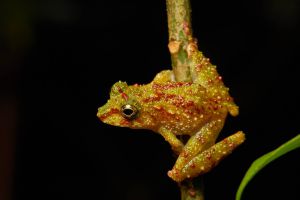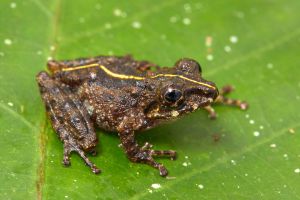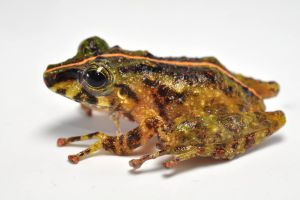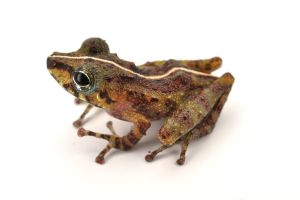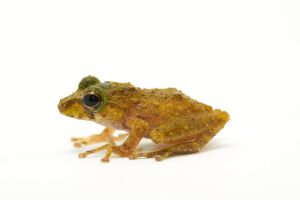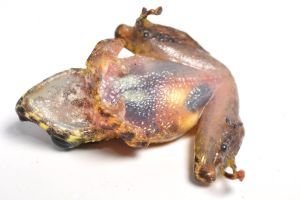
Frogs of Borneo

Frogs of Borneo

Frogs of Borneo

Frogs of Borneo

Frogs of Borneo

Frogs of Borneo

Frogs of Borneo

Frogs of Borneo

Frogs of Borneo

Frogs of Borneo

Frogs of Borneo
Bornean Families
Philautus:
tectus
Obscure Bush Frog
The type locality of this species is Camp 5, Gunung Mulu National Park, Sarawak, at 150 m a.s.l. The habitats of Philautus tectus range from the lowlands up to about 1500 m a.s.l. It is fairly common in primary forests but tolerates secondary forests to some extent. The species is commonly found in Sarawak and Sabah. It also occurs in Kalimantan.
Philautus tectus is a variable bush frog exhibiting green, brown, and reddish coloration. At night, individuals appear light yellowish green. The species shows distinct diurnal (dark) and nocturnal (light) color phases. Some individuals bear a yellow stripe along the dorsum, following the vertebral line. It is a small species: males reach 20–23 mm and females up to 27 mm in snout–vent length.
The body is relatively slender. All digits bear adhesive pads. The fingers are unwebbed, while the toes are approximately two-thirds webbed. The canthus rostralis is sharp and distinctly curved, defining a narrow snout with closely set nostrils. In profile, the snout is relatively long and tapers anteriorly. The pupil is horizontal and elliptical, and the iris coloration ranges from pale bronze to pale golden.
The skin texture of the dorsum is pebbled, with scattered larger tubercles. The ventral surface is smoothly pebbled. Pigmentation on the underside is concentrated on the throat and chest, while the remaining areas are semi-translucent.
Once familiar with the call of this species, one is likely to hear it frequently, especially along forest edges—streams, roads, and trails—where the canopy opens slightly and ferns are abundant. The frog itself, however, is easily overlooked because of its small size and excellent camouflage. The call is difficult to describe onomatopoetically; it is a pleasant, high-pitched, rapid “wee-wib.” Calling males are usually found perching on vegetation 0.5–3 m above the ground. We have detected terrestrial egg clutches of P. tectus and confirmed that it reproduces by direct development.
Version tracking
-
29.10.2025
updated
